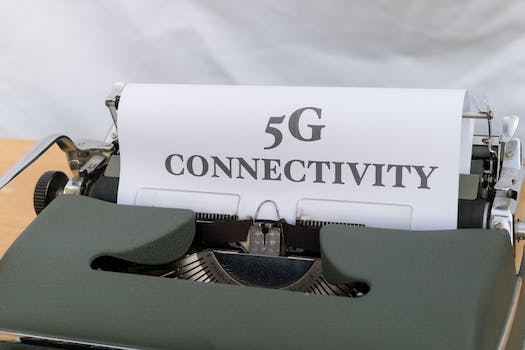-
Table of Contents
.
“Unlock the Power of IoT: Connecting People, Places, and Things for a Smarter Future.”
Introduction
The Internet of Things (IoT) is transforming the way we live and work. It is a network of physical objects, such as sensors, connected to the internet, which can collect and exchange data. IoT is revolutionizing the way we interact with our environment, allowing us to monitor, control, and automate processes in our homes, businesses, and cities. IoT is enabling us to create smarter, more efficient, and more connected systems that can improve our lives and the way we do business. From connected cars to smart homes, IoT is transforming our connected world.
How IoT is Revolutionizing the Automotive Industry

The automotive industry is undergoing a revolution, and the Internet of Things (IoT) is at the forefront of this transformation. IoT is transforming the way cars are designed, manufactured, and used, and it is revolutionizing the automotive industry.
IoT is enabling automakers to create smarter, more connected cars. Automakers are using IoT to create cars that are more efficient, safer, and more reliable. IoT-enabled cars can communicate with each other and with the infrastructure around them, allowing for improved navigation, better traffic management, and more efficient driving. IoT-enabled cars can also detect potential problems and alert drivers to potential hazards.
IoT is also revolutionizing the way cars are manufactured. Automakers are using IoT to streamline the manufacturing process, making it faster and more efficient. IoT-enabled manufacturing systems can monitor the production process in real-time, allowing for faster detection of problems and quicker resolution. This helps automakers reduce costs and improve quality.
Finally, IoT is revolutionizing the way cars are used. Automakers are using IoT to create cars that are more connected and personalized. Cars can now be equipped with sensors that monitor the driver’s behavior and provide feedback to improve their driving. Automakers are also using IoT to create cars that can be controlled remotely, allowing drivers to access their cars from anywhere.
The automotive industry is undergoing a major transformation, and IoT is at the forefront of this revolution. IoT is enabling automakers to create smarter, more connected cars that are more efficient, safer, and more reliable. It is also revolutionizing the way cars are manufactured and used. The future of the automotive industry is bright, and IoT is leading the way.
The Benefits of Smart Home Technology Enabled by IoT
The Internet of Things (IoT) has revolutionized the way we interact with our homes. Smart home technology enabled by IoT has made it easier than ever to control and monitor our homes from anywhere in the world. From controlling the temperature and lighting to monitoring security systems, the benefits of smart home technology are numerous.
One of the most obvious benefits of smart home technology is convenience. With the ability to control and monitor your home from anywhere, you can easily adjust the temperature, lights, and security systems without having to physically be present. This makes it easier to manage your home while you’re away on vacation or at work.
Another benefit of smart home technology is energy efficiency. Smart thermostats, for example, can be programmed to adjust the temperature based on your schedule, which can help reduce energy costs. Smart lighting systems can also be programmed to turn off when you’re not home, which can help reduce energy consumption.
Smart home technology also provides enhanced security. With the ability to monitor your home from anywhere, you can easily keep an eye on your home while you’re away. Smart security systems can also be programmed to alert you if there is any suspicious activity.
Finally, smart home technology can help improve your quality of life. With the ability to control and monitor your home from anywhere, you can easily adjust the temperature, lights, and security systems to create the perfect environment for you and your family.
Smart home technology enabled by IoT has revolutionized the way we interact with our homes. From convenience and energy efficiency to enhanced security and improved quality of life, the benefits of smart home technology are numerous. If you’re looking to upgrade your home, consider investing in smart home technology enabled by IoT.
Exploring the Potential of IoT in Healthcare
The Internet of Things (IoT) is revolutionizing the healthcare industry, offering a range of potential benefits for both patients and healthcare providers. IoT technology is enabling healthcare providers to collect and analyze data in real-time, allowing them to make more informed decisions and provide better care.
IoT technology can be used to monitor patients’ vital signs, such as heart rate, blood pressure, and temperature. This data can be used to detect changes in a patient’s health and alert healthcare providers to any potential issues. IoT-enabled devices can also be used to track a patient’s activity levels, helping to identify any potential health risks.
IoT technology can also be used to improve the efficiency of healthcare providers. For example, IoT-enabled devices can be used to automate administrative tasks, such as scheduling appointments and managing patient records. This can help to reduce the amount of time healthcare providers spend on paperwork, freeing up more time to focus on patient care.
IoT technology can also be used to improve the accuracy of diagnosis and treatment. For example, IoT-enabled devices can be used to collect data from a variety of sources, such as medical records, lab results, and patient surveys. This data can then be analyzed to identify patterns and trends, helping healthcare providers to make more informed decisions.
Finally, IoT technology can be used to improve patient engagement. For example, IoT-enabled devices can be used to provide patients with personalized health advice and reminders. This can help to ensure that patients are taking the necessary steps to maintain their health and reduce the risk of complications.
The potential of IoT in healthcare is vast, and the possibilities are only beginning to be explored. As the technology continues to evolve, it is likely that it will become an increasingly important part of healthcare delivery.
The Impact of IoT on Businesses and Industries
The Internet of Things (IoT) is transforming the way businesses and industries operate. IoT is a network of physical objects, such as sensors, connected to the internet, which can collect and exchange data. This technology is revolutionizing the way businesses and industries interact with their customers, employees, and partners.
IoT is enabling businesses and industries to become more efficient and productive. By connecting devices and systems, businesses and industries can automate processes, reduce costs, and improve customer service. For example, IoT can be used to monitor and control energy usage, track inventory, and monitor customer behavior. This data can be used to optimize operations and improve customer experience.
IoT is also transforming the way businesses and industries interact with their customers. By connecting devices and systems, businesses and industries can provide personalized services and experiences to their customers. For example, IoT can be used to track customer preferences and provide tailored recommendations. Additionally, IoT can be used to monitor customer feedback and provide real-time customer support.
Finally, IoT is transforming the way businesses and industries collaborate with their partners. By connecting devices and systems, businesses and industries can share data and insights in real-time. This data can be used to develop new products and services, optimize operations, and improve customer experience.
In conclusion, IoT is transforming the way businesses and industries operate. By connecting devices and systems, businesses and industries can automate processes, reduce costs, and improve customer service. Additionally, IoT can be used to provide personalized services and experiences to customers and collaborate with partners. As IoT continues to evolve, businesses and industries will continue to benefit from its many advantages.
Security Challenges of IoT and How to Overcome Them
The Internet of Things (IoT) is a rapidly growing technology that is transforming the way we live and work. It is estimated that by 2025, there will be more than 75 billion connected devices in use worldwide. However, with this growth comes a number of security challenges that must be addressed in order to ensure the safety and security of these devices and the data they generate.
One of the biggest security challenges of IoT is the lack of security protocols and standards. As the technology is still relatively new, there are no established protocols or standards for securing IoT devices. This means that many devices are vulnerable to attack, as they are not properly secured. Additionally, many IoT devices are not designed with security in mind, making them even more vulnerable.
Another security challenge of IoT is the lack of visibility into the data generated by these devices. As IoT devices generate large amounts of data, it can be difficult to monitor and analyze this data in order to detect any malicious activity. Additionally, many IoT devices are not designed with data privacy in mind, meaning that the data they generate can be easily accessed by malicious actors.
Finally, the lack of authentication and authorization protocols for IoT devices is another security challenge. Without proper authentication and authorization protocols, malicious actors can easily gain access to these devices and the data they generate.
Fortunately, there are a number of steps that can be taken to address these security challenges. First, organizations should ensure that all IoT devices are properly secured with the latest security protocols and standards. Additionally, organizations should ensure that all data generated by these devices is properly monitored and analyzed in order to detect any malicious activity. Finally, organizations should ensure that all IoT devices are properly authenticated and authorized in order to prevent unauthorized access.
By taking these steps, organizations can ensure that their IoT devices are secure and that the data they generate is protected from malicious actors. Additionally, these steps can help organizations ensure that their data is kept private and secure.
Conclusion
The Internet of Things (IoT) is transforming our connected world by connecting physical objects to the internet and allowing them to communicate with each other. IoT is revolutionizing the way we interact with our environment, providing us with unprecedented access to data and insights. IoT is enabling us to create smarter, more efficient, and more secure systems, and is paving the way for a more connected future. IoT is transforming our world in ways we never thought possible, and its potential is only beginning to be realized.















